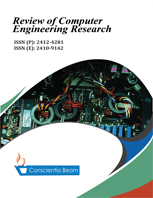A Simple and Effective Methodology for Generating Bounded Solutions for the Set K-Covering and Set Variable K-Covering Problems: A Guide for or Practitioners
DOI:
https://doi.org/10.18488/journal.76.2021.82.76.95Abstract
As generalizations of the classic set covering problem (SCP), both the set K-covering problem (SKCP) and the set variable (K varies by constraint) K-covering problem (SVKCP) are easily shown to be NP-hard. Solution approaches in the literature for the SKCP typically provide no guarantees on solution quality. In this article, a simple methodology, called the simple sequential increasing tolerance (SSIT) matheuristic, that iteratively uses any general-purpose integer programming software (Gurobi and CPLEX in this case) is discussed. This approach is shown to quickly generate solutions that are guaranteed to be within a tight tolerance of the optimum for 135 SKCPs (average of 67 seconds on a standard PC and at most 0.13% from the optimums) from the literature and 65 newly created SVKCPs. This methodology generates solutions that are guaranteed to be within a specified percentage of the optimum in a short time (actual deviation from the optimums for the 135 SKCPs was 0.03%). Statistical analyses among the five best SKCP algorithms and SSIT demonstrates that SSIT performs as well as the best published algorithms designed specifically to solve SKCPs and SSIT requires no time-consuming effort of coding problem-specific algorithms—a real plus for OR practitioners.





